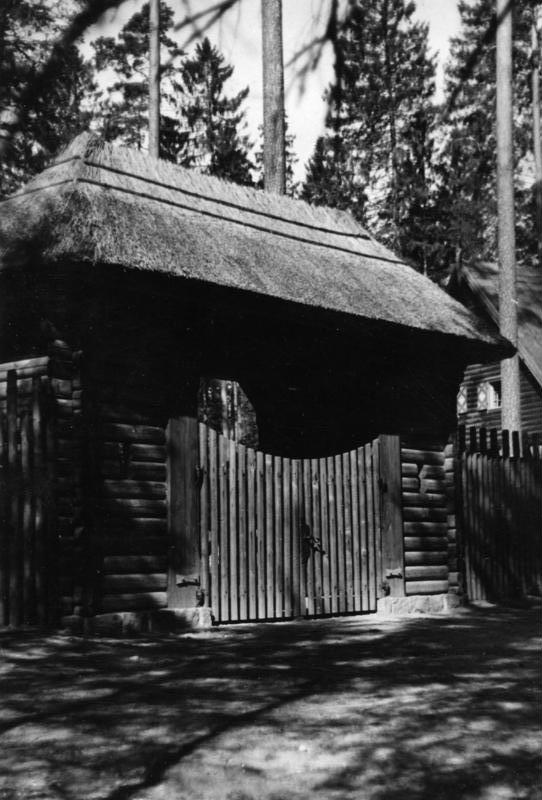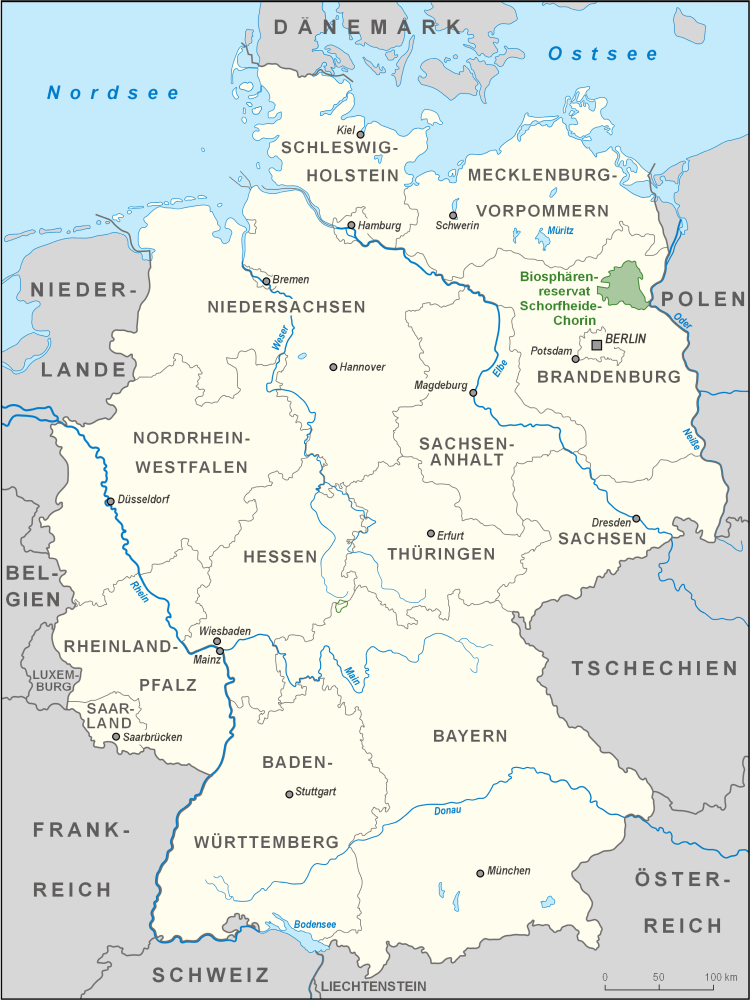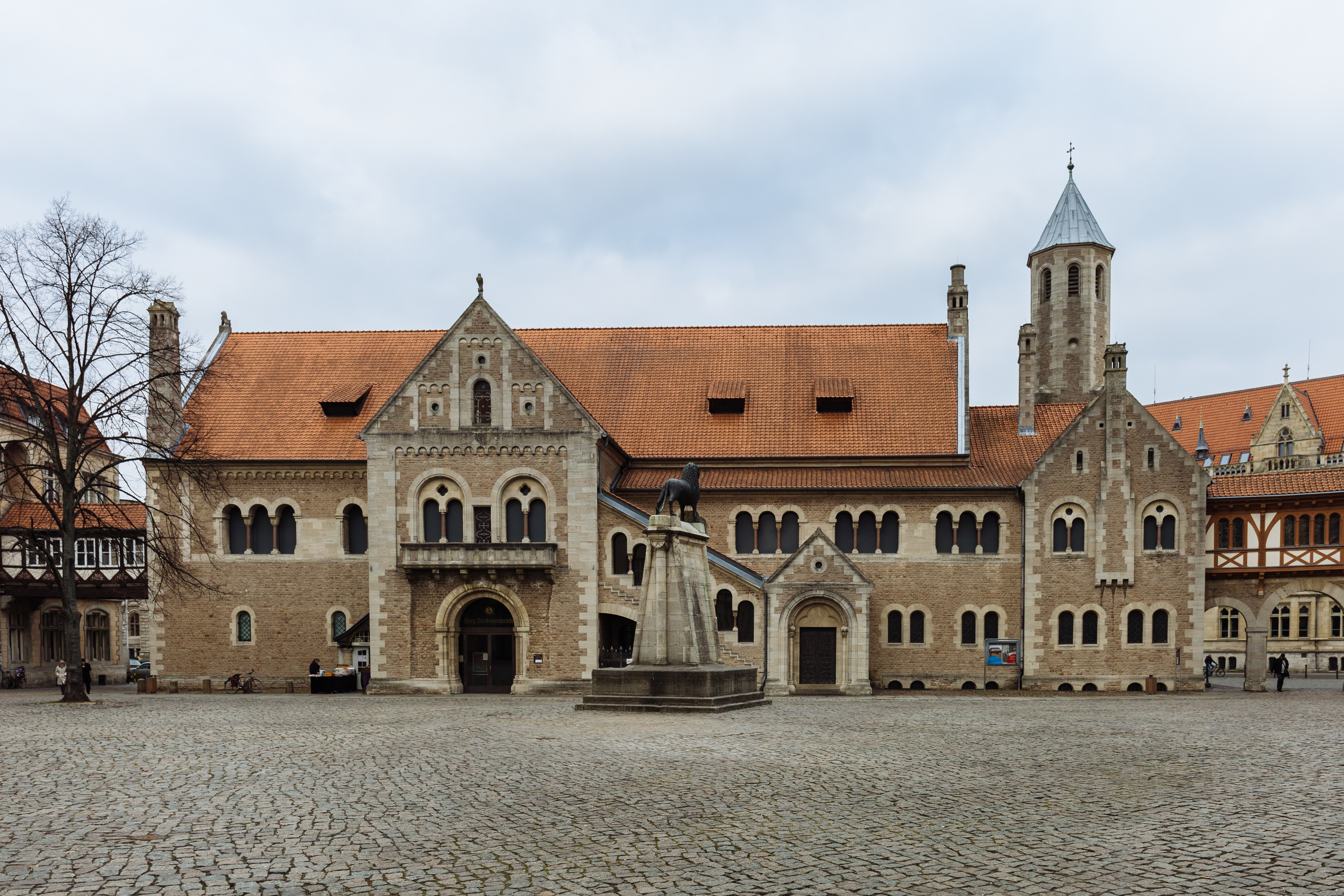|
Reichsjägerhof Rominten
The Reichsjägerhof Rominten was Hermann Göring's Hunting Lodge in the Rominter Heath (russian: Krasny Les; Красный лес; pl, Puszcza Romincka) in East Prussia. After the German attack on the Soviet Union, it temporarily served as Göring's headquarters. History The Rominter Heath had a long tradition as a Royal Hunting ground in East Prussia. From 1890 to 1913 Kaiser Wilhelm II had visited the Heath annually, since 1891 Wilhelm owned the Rominten Hunting Lodge. In September 1933 Wilhelm refused to allow Hermann Göring to stay in the lodge, subsequently Göring built his own lodge (after Wilhelm's death Göring forced the heirs to sell the Royal lodge to him). In September 1935, Göring authorized the construction of a Hunting lodge in the Rominter Heath, which was completed in September 1936. Initially Göring planned to name the complex after his second wife Emmy "Emmyhall" like he did at Carinhall in the Schorfheide after his first wife. However the complex w ... [...More Info...] [...Related Items...] OR: [Wikipedia] [Google] [Baidu] |
Bundesarchiv Bild 146-2008-0001, Rominten, Reichsjägerhof, Eingang
, type = Archive , seal = , seal_size = , seal_caption = , seal_alt = , logo = Bundesarchiv-Logo.svg , logo_size = , logo_caption = , logo_alt = , image = Bundesarchiv Koblenz.jpg , image_caption = The Federal Archives in Koblenz , image_alt = , formed = , preceding1 = , preceding2 = , dissolved = , superseding1 = , superseding2 = , agency_type = , jurisdiction = , status = Active , headquarters = PotsdamerStraße156075Koblenz , coordinates = , motto = , employees = , budget = million () , chief1_name = Michael Hollmann , chief1_position = President of the Federal Archives , chief2_name = Dr. Andrea Hänger , chief2_position ... [...More Info...] [...Related Items...] OR: [Wikipedia] [Google] [Baidu] |
Schorfheide
The Schorfheide-Chorin Biosphere Reserve, often shortened to Schorfheide, is a biosphere reserve in the German State of Brandenburg near the Polish border. The reserve was established on 1 October 1990 following the German Reunification and is under the protection of the UNESCO Man and Biosphere Reserve Programme. It stretches over the German districts of Barnim, Uckermark, Märkisch-Oderland and Oberhavel and incorporates an area of . Notable towns are Eberswalde, Joachimsthal and Friedrichswalde. The core area of the reserve is formed by the Schorfheide forest, one of the largest cohesive woodlands in Germany. History From the Early Middle Ages until the period of the Thirty Years' War, the area fell under the responsibility of the cloister of Chorin which led to a cultivation of suitable spaces. Forest clearances took place for the sake of producing weapons for the Prussian army, but the woods were usually afforested. Large parts of the woodland were left un ... [...More Info...] [...Related Items...] OR: [Wikipedia] [Google] [Baidu] |
Demolished Buildings And Structures In Germany
Demolition (also known as razing, cartage, and wrecking) is the science and engineering in safely and efficiently tearing down of buildings and other artificial structures. Demolition contrasts with deconstruction, which involves taking a building apart while carefully preserving valuable elements for reuse purposes. For small buildings, such as houses, that are only two or three stories high, demolition is a rather simple process. The building is pulled down either manually or mechanically using large hydraulic equipment: elevated work platforms, cranes, excavators or bulldozers. Larger buildings may require the use of a wrecking ball, a heavy weight on a cable that is swung by a crane into the side of the buildings. Wrecking balls are especially effective against masonry, but are less easily controlled and often less efficient than other methods. Newer methods may use rotational hydraulic shears and silenced rock-breakers attached to excavators to cut or break through wo ... [...More Info...] [...Related Items...] OR: [Wikipedia] [Google] [Baidu] |
Hunting Lodges
Hunting is the human practice of seeking, pursuing, capturing, or killing wildlife or feral animals. The most common reasons for humans to hunt are to harvest food (i.e. meat) and useful animal products (fur/ hide, bone/ tusks, horn/antler, etc.), for recreation/ taxidermy (see trophy hunting), to remove predators dangerous to humans or domestic animals (e.g. wolf hunting), to eliminate pests and nuisance animals that damage crops/livestock/poultry or spread diseases (see varminting), for trade/tourism (see safari), or for ecological conservation against overpopulation and invasive species. Recreationally hunted species are generally referred to as the ''game'', and are usually mammals and birds. A person participating in a hunt is a hunter or (less commonly) huntsman; a natural area used for hunting is called a game reserve; an experienced hunter who helps organize a hunt and/or manage the game reserve is known as a gamekeeper. Many non-human animals also hunt (see pr ... [...More Info...] [...Related Items...] OR: [Wikipedia] [Google] [Baidu] |
Houses Completed In 1930
A house is a single-unit residential building. It may range in complexity from a rudimentary hut to a complex structure of wood, masonry, concrete or other material, outfitted with plumbing, electrical, and heating, ventilation, and air conditioning systems.Schoenauer, Norbert (2000). ''6,000 Years of Housing'' (rev. ed.) (New York: W.W. Norton & Company). Houses use a range of different roofing systems to keep precipitation such as rain from getting into the dwelling space. Houses may have doors or locks to secure the dwelling space and protect its inhabitants and contents from burglars or other trespassers. Most conventional modern houses in Western cultures will contain one or more bedrooms and bathrooms, a kitchen or cooking area, and a living room. A house may have a separate dining room, or the eating area may be integrated into another room. Some large houses in North America have a recreation room. In traditional agriculture-oriented societies, domestic animals such a ... [...More Info...] [...Related Items...] OR: [Wikipedia] [Google] [Baidu] |
Soviet Union
The Soviet Union,. officially the Union of Soviet Socialist Republics. (USSR),. was a List of former transcontinental countries#Since 1700, transcontinental country that spanned much of Eurasia from 1922 to 1991. A flagship communist state, it was nominally a Federation, federal union of Republics of the Soviet Union, fifteen national republics; in practice, both Government of the Soviet Union, its government and Economy of the Soviet Union, its economy were highly Soviet-type economic planning, centralized until its final years. It was a one-party state governed by the Communist Party of the Soviet Union, with the city of Moscow serving as its capital as well as that of its largest and most populous republic: the Russian Soviet Federative Socialist Republic, Russian SFSR. Other major cities included Saint Petersburg, Leningrad (Russian SFSR), Kyiv, Kiev (Ukrainian Soviet Socialist Republic, Ukrainian SSR), Minsk (Byelorussian Soviet Socialist Republic, Byelorussian SSR), Tas ... [...More Info...] [...Related Items...] OR: [Wikipedia] [Google] [Baidu] |
Kaliningrad Oblast
Kaliningrad Oblast (russian: Калинингра́дская о́бласть, translit=Kaliningradskaya oblast') is the westernmost federal subject of Russia. It is a semi-exclave situated on the Baltic Sea. The largest city and administrative centre of the province ( oblast) is the city of Kaliningrad, formerly known as Königsberg. The port city of Baltiysk is Russia's only port on the Baltic Sea that remains ice-free in winter. Kaliningrad Oblast had a population of roughly 1 million in the Russian Census of 2010. The oblast is bordered by Poland to the south, Lithuania to the north and east and the Baltic Sea to the north-west. The territory was formerly the northern part of the Prussian province of East Prussia; the remaining southern part of the province is today part of the Warmian-Masurian Voivodeship in Poland. With the defeat of Nazi Germany in World War II, the territory was annexed to the Russian SFSR by the Soviet Union. Following the post-w ... [...More Info...] [...Related Items...] OR: [Wikipedia] [Google] [Baidu] |
Gumbinnen Operation
The Gumbinnen Operation,Glantz, ''Failures of Historiography'' also known as the Goldap Operation (or Goldap-Gumbinnen Operation, russian: Гумбиннен-Гольдапская наступательная операция), was a Soviet Union, Soviet offensive on the Eastern Front (World War II), Eastern Front late in 1944, in which forces of the 3rd Belorussian Front attempted to penetrate the borders of East Prussia. Planning The operation was planned as a result of the success of the Battle of Memel, Memel Offensive Operation to the north. The troops of the 1st Baltic and 3rd Belorussian Fronts had succeeded in pushing the 3rd Panzer Army, Third Panzer Army back to the East Prussian border, surrounding the city of Klaipėda, Memel and reaching the shore of the Curonian Lagoon. ''Stavka'' permitted Chernyakhovsky to further exploit this success by attacking along the Gusev, Kaliningrad Oblast, Gumbinnen – Chernyakhovsk, Insterburg – Königsberg (now Kaliningrad) axis ... [...More Info...] [...Related Items...] OR: [Wikipedia] [Google] [Baidu] |
Game Reserve
A game reserve (also known as a wildlife preserve or a game park) is a large area of land where wild animals live safely or are hunted in a controlled way for sport. If hunting is prohibited, a game reserve may be considered a nature reserve; however, the focus of a game reserve is specifically the animals (fauna), whereas a nature reserve is also, if not equally, concerned with all aspects of native biota of the area (plants, animals, fungi, etc.). Many game reserves are located in Africa. Most are open to the public, and tourists commonly take sightseeing safaris. Historically, among the best-known hunting targets were the so-called Big Five game in Africa: rhinoceros, elephant, Cape buffalo, leopard, and lion, named so because of the difficulty and danger in hunting them. In a game reserve, ecosystems are protected and conservation is usually key. Indigenous wildlife in its natural habitat help in providing an environment where growth in numbers at a natural rate can occu ... [...More Info...] [...Related Items...] OR: [Wikipedia] [Google] [Baidu] |
Braunschweig
Braunschweig () or Brunswick ( , from Low German ''Brunswiek'' , Braunschweig dialect: ''Bronswiek'') is a city in Lower Saxony, Germany, north of the Harz Mountains at the farthest navigable point of the river Oker, which connects it to the North Sea via the rivers Aller and Weser. In 2016, it had a population of 250,704. A powerful and influential centre of commerce in medieval Germany, Brunswick was a member of the Hanseatic League from the 13th until the 17th century. It was the capital city of three successive states: the Principality of Brunswick-Wolfenbüttel (1269–1432, 1754–1807, and 1813–1814), the Duchy of Brunswick (1814–1918), and the Free State of Brunswick (1918–1946). Today, Brunswick is the second-largest city in Lower Saxony and a major centre of scientific research and development. History Foundation and early history The date and circumstances of the town's foundation are unknown. Tradition maintains that Brunswick was created through t ... [...More Info...] [...Related Items...] OR: [Wikipedia] [Google] [Baidu] |
Carinhall
Carinhall was the country residence of Hermann Göring, built in the 1930s on a large hunting estate north-east of Berlin in the Schorfheide Forest, in the north of Brandenburg, between the lakes of Großdöllner See and Wuckersee. History Named in honour of his Swedish first wife, Carin Göring (1888–1931), the residence was constructed in stages from 1933 on a large scale. In June 1933, Göring commissioned the architect Werner March to build a Swedish-style hunting lodge. Carin Göring's remains had first been interred in Sweden following her death, but were moved to Carinhall in 1934 and placed in a crypt on the grounds. On 10 April 1935, Carinhall was the venue for Göring's wedding banquet with his second wife, Emmy Sonnemann. Carinhall became the destination for many of Göring's looted art treasures from across occupied Europe. Emmyhall The ''Reichsjägerhof'', Göring's smaller hunting lodge at Rominten in East Prussia (now Krasnolesye), in the Rominten Heath ... [...More Info...] [...Related Items...] OR: [Wikipedia] [Google] [Baidu] |
Hermann Göring
Hermann Wilhelm Göring (or Goering; ; 12 January 1893 – 15 October 1946) was a German politician, military leader and convicted war criminal. He was one of the most powerful figures in the Nazi Party, which ruled Germany from 1933 to 1945. A veteran World War I fighter pilot ace, Göring was a recipient of the ("The Blue Max"). He was the last commander of ''Jagdgeschwader'' 1 (Jasta 1), the fighter wing once led by Manfred von Richthofen. An early member of the Nazi Party, Göring was among those wounded in Adolf Hitler's failed Beer Hall Putsch in 1923. While receiving treatment for his injuries, he developed an addiction to morphine which persisted until the last year of his life. After Hitler became Chancellor of Germany in 1933, Göring was named as minister without portfolio in the new government. One of his first acts as a cabinet minister was to oversee the creation of the Gestapo, which he ceded to Heinrich Himmler in 1934. Following the establishment of t ... [...More Info...] [...Related Items...] OR: [Wikipedia] [Google] [Baidu] |








